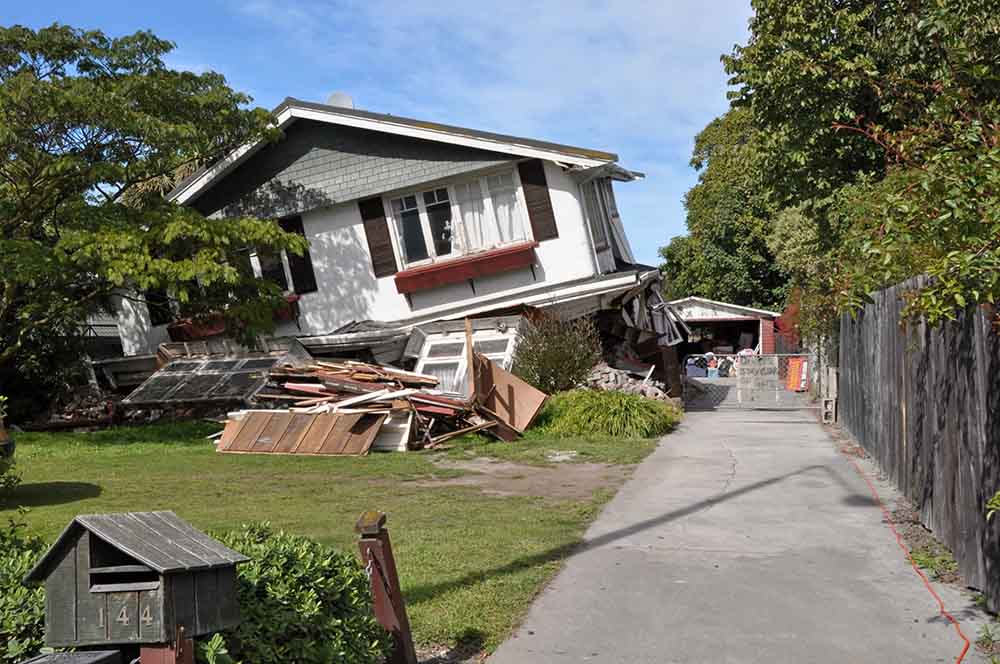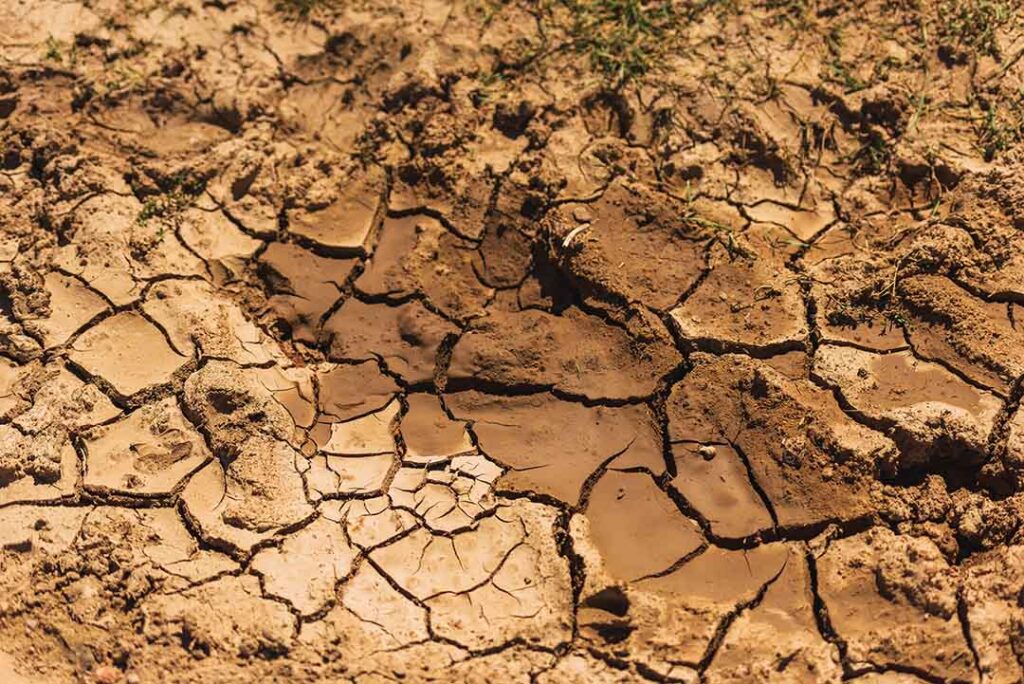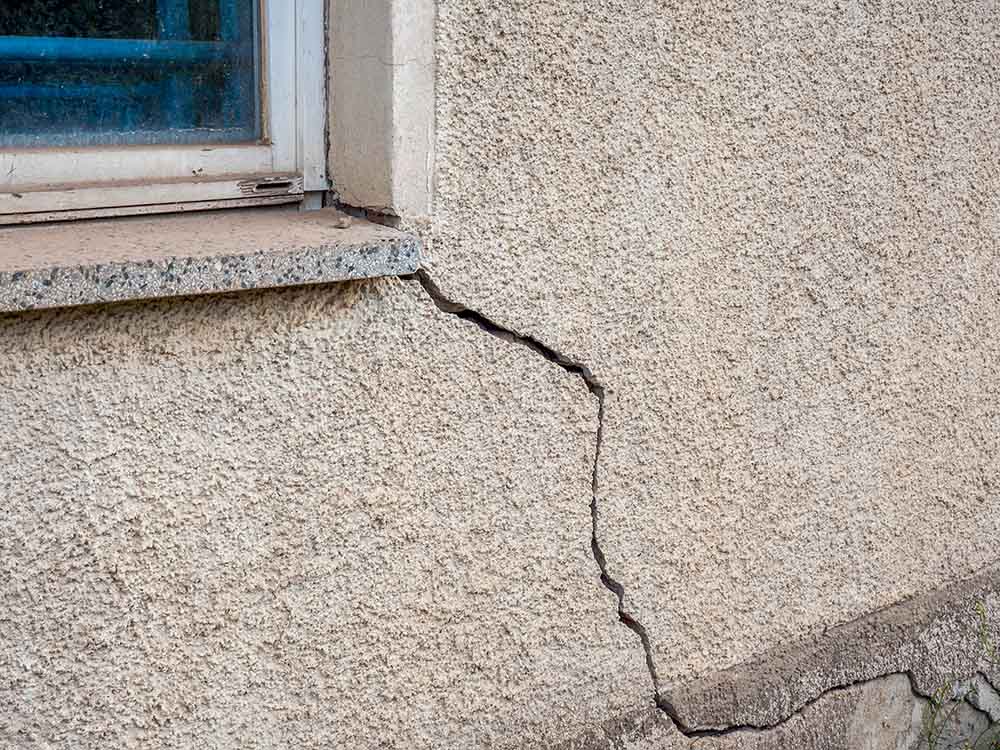A sinking foundation is one of the most serious issues a homeowner can face, and ignoring it can lead to severe structural damage over time. When your foundation settles unevenly, it can cause cracks in your walls, floors, and ceilings, leading to long-term stability problems and costly repairs. Addressing a sinking foundation early is crucial to preventing further damage and protecting the value of your home.
In this article, we’ll explore the risks of not repairing foundation sinking and the best solutions for fixing this problem before it escalates. If your foundation is sinking, AMC911 Foundation & Crawl Space Repair can help. Our experts provide reliable solutions to restore stability and protect your home.

What Causes A Foundation To Sink?
A sinking foundation isn’t a problem that happens overnight; it results from a combination of external factors that weaken the ground beneath your home. These factors often work together, gradually destabilizing the foundation. Here’s a closer look at the key causes:
Water Damage: The Silent Culprit
Water is one of the most common and destructive factors affecting foundations. It impacts the soil, the structure, and everything in between:
- Poor Drainage: When rainwater isn’t directed away from the foundation, it saturates the soil. Excess moisture can weaken the soil’s ability to support the structure, making sinking more likely.
- Plumbing Leaks: Undetected leaks from pipes under or near the home can gradually erode the surrounding soil, leaving voids compromising the foundation’s stability.
- Flooding: The soil can quickly become oversaturated in areas prone to flooding. The waterlogged ground loses its strength, allowing the foundation to sink under the weight of the house. According to the Virginia Department of Conservation and Recreation, the most common and costly natural disaster is flooding, yet only 3% of Virginians have flood insurance. Even a single inch of water in a home can result in damages exceeding $25,000, highlighting the severe financial risks of flooding.

Soil Problems: The Foundation’s Greatest Enemy
Soil plays an important role in how well a foundation holds up over time. Unfortunately, not all soils are created equal, and certain types are more prone to causing foundation issues:
- Expansive Soils: Soils rich in clay expand significantly when wet and shrink when dry. This constant swelling and contracting can push against your foundation, causing uneven pressure and eventual sinking. According to the British Geological Survey, shrink-swell soils cause $15 billion in annual damage in the U.S., impacting one in four homes. Their financial impact surpasses earthquakes, floods, hurricanes, and tornadoes combined.
- Poorly Compacted Soil: The soil must be compacted before construction to provide a stable base. If this step is skipped or done improperly, the soil settles over time, leading to foundation movement.
- Soil Erosion: Heavy rains, poor drainage, or even landscaping mistakes can wash away soil from beneath your home. This creates empty spaces (voids) that your foundation can sink into.
Poor Construction Practices
The foundation of your home is only as good as the planning and materials behind it. Unfortunately, shortcuts during construction can lead to long-term problems:
- Inadequate Site Preparation: Builders must account for soil type, drainage, and climate. Failing to do so often results in foundations that aren’t suited for the site’s specific conditions.
- Substandard Materials: Low-quality concrete or reinforcing materials can make the foundation susceptible to cracks and sinking over time.
- Improper Foundation Design: A one-size-fits-all approach to foundations doesn’t work. If the foundation isn’t designed to handle the structure’s weight or adapt to local soil conditions, sinking becomes a serious risk.

The Dangers Of Ignoring A Sinking Foundation
A sinking foundation is not just a minor issue—it’s a serious structural problem that worsens over time. Ignoring it can lead to costly repairs, compromised safety, and damage to your home. Here’s a detailed look at the foundation settlement risks:
Worsening Structural Damage
A sinking foundation puts immense stress on your home, creating widespread structural issues:
- Expanding Cracks: Small cracks in walls, ceilings, and floors grow larger as the foundation sinks, indicating structural problems.
- Uneven Floors: A sinking foundation causes sloping or sagging floors. It makes walking and furniture placement challenging.
- Sticking Doors and Windows: Foundation movement misaligns doors and windows, causing them to jam or stick.
- Safety Risks: Severe damage can make your home unsafe, leading to costly repairs or, in extreme cases, making it unlivable.
Water Intrusion And Moisture Problems
Foundation settlement often creates gaps and openings that allow water to seep into your home:
- Flood Risks: Water can easily enter through cracks in the foundation, leading to pooling in basements or crawl spaces. This increases the risk of flooding during heavy rains or snowmelt.
- Mold Growth: Moisture promotes mold and mildew, damaging materials and causing health issues like allergies and respiratory problems.
- Structural Decay: Moisture weakens wooden beams and joists, further compromising the home’s stability.
Declining Home Value
Foundation issues have a significant impact on your home’s marketability and resale value:
- Buyer Hesitation: Unresolved foundation issues can scare off buyers due to high repair costs and potential problems.
- Lower Value: Homes with foundation damage often appraise for less, making it harder to sell at market price.
- Doubt in Quality: Visible cracks or uneven floors can make buyers question the home’s safety and condition.
Escalating Repair Costs
The longer you delay addressing a sinking foundation, the more expensive the repairs become:
- Worsening Damage: A small crack can quickly grow into a major issue, leading to widespread repairs instead of simple fixes.
- Additional Repairs: Foundation problems can affect plumbing and electrical systems, increasing overall costs.
- Costlier Solutions: Severe damage may need labor-intensive fixes like underpinning or installing foundation piers. These are more expensive than early repairs.
Real-World Examples Of Homes With Sinking Foundations
Louis and his wife discovered a major problem with their home just a year after buying it—the left side was sinking due to poor structural support. Cracks in the walls and ceilings made the issue obvious, and further inspection revealed it had been ongoing. Unfortunately, the previous owner hadn’t addressed it, making the foundation damage worse over time.
Delaying repairs made the damage worse, leading to costly and extensive fixes. The sinking foundation caused structural issues and financially and emotionally strained Louis and his wife.
The damage was severe when they finally sought help and needed urgent attention. Their experience shows why it’s crucial to address foundation problems early. Small signs like cracks or uneven floors should never be ignored.

Best Solutions For Fixing A Sinking Foundation
Repairing a sinking foundation involves identifying the cause and choosing solutions based on the severity of the issue. Here are the best options:
Helical Piers
Helical piers are a highly effective sinking foundation repair solution for homes with expansive or unstable soils. These steel piers have screw-like helix plates driven deep into the ground to anchor your foundation to stable soil or bedrock. By transferring the structure’s weight to a more reliable layer of soil, they provide long-term stability.
- Best Use Cases: Homes experiencing uneven settling due to weak or expansive soils.
- Benefits: Helical piers are quick to install, minimally invasive, and adaptable to different soil conditions. They also work well in areas where heavy machinery access is limited.
Push Piers
Push piers are another reliable method for stabilizing a sinking foundation. Constructed from steel, these piers are hydraulically installed deep into the ground, reaching a stable soil layer or bedrock for support. Once in place, they can lift the foundation back to its original position.
- Best Use Cases: Severe foundation settlement in areas with access to solid ground layers below unstable soil.
- Benefits: Push piers provide a permanent solution to foundation settlement and can restore structural integrity, ensuring the foundation is level and secure.
Foundation Leveling
Foundation leveling fixes uneven settling by lifting the foundation back to its original position and securing it with piers or supports. Additional repairs may be needed to restore structural integrity.
- Best For: Sinking foundations causing uneven floors, sticking doors, or wall cracks.
- Benefits: Repairs damage, prevents further settling, and restores structural balance.
Soil Stabilization
Soil stabilization strengthens the ground and prevents future settling for foundations on unstable or expansive soils. It often involves injecting grout or chemicals to improve soil strength and reduce movement.
- Best For: Homes on clay-rich or unstable soils.
- Benefits: Improves foundation support and reduces the risk of future settlement.
Why Early Repair Is Critical for Homeowners
Fixing a sinking foundation early can save homeowners from serious damage and costly repairs. Here’s why quick action matters:
- Prevent More Damage: Early repairs stop further sinking, preventing cracks and structural issues from worsening.
- Avoid Water Issues: Repairing cracks early blocks water intrusion and waterproofing your foundation reduces the risk of flooding and moisture problems.
- Save Money: Delayed repairs are more expensive. Early fixes are simpler and less costly than dealing with severe damage.
A sinking foundation needs prompt attention. Early solutions, such as helical piers, push piers, or foundation leveling, can prevent structural damage, water intrusion, and costly repairs. If you notice signs of foundation settlement, consult a foundation repair expert to find the best solution.















